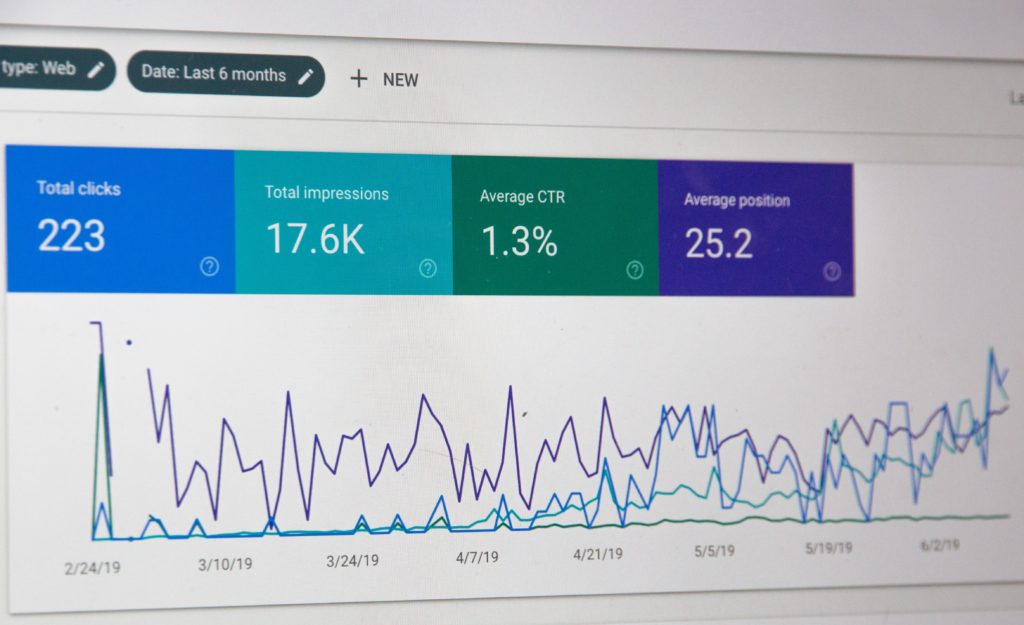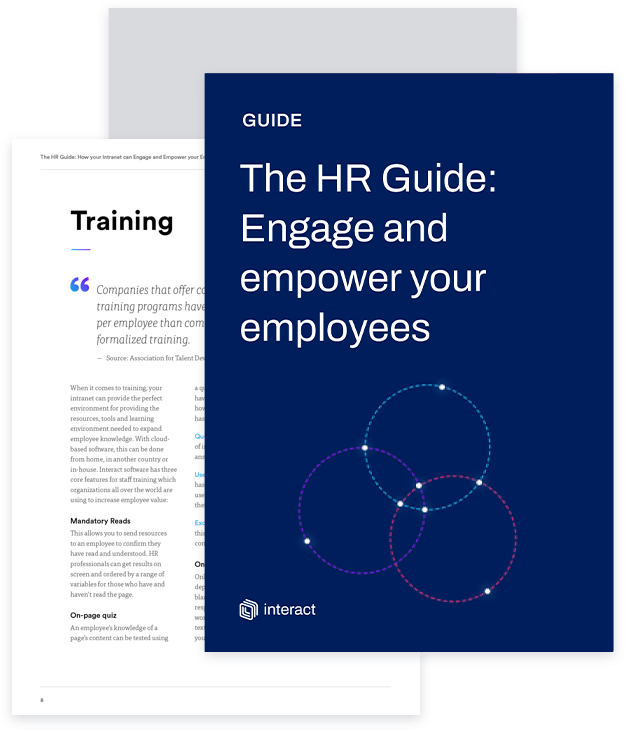Are you doing pulse surveys right?

Pulse surveys are a great way of checking the health of your organization. But how effectively are you handling the data results?
In a recent article published by the Association for Talent Development, the author Sarah R Johnson ruminated over the comparison between pulse surveys and Fitbits. As both are employed to do a quick check-in on the health of the user or organization, it seems like an apt observation. But, Johnson went on to explain, while a Fitbit is great at tracking your steps, making you aware of how active you are on a daily basis, encouraging you to get up and move, it fails to provide you with accurate data on its own. It only gives you an insight into a smaller part of the bigger picture – without access to your diet, your mental health and your general fitness (ie: anything not counted in ‘step’ form, like swimming or lifting), it is not a complete overview on you as a fully-formed human.
The same could be said for pulse surveys, Johnson argues. Without the help of other metrics, these quick-fire polls and questions are not completely representative in measuring the wellbeing and engagement of your organization. The role that pulse surveys play is invaluable, but in order to get the best out of them, they should be used as part of a wider engagement initiative. Insights from other types of polls and questionnaires, from hiring and leaving stats, and from employee analytics should also be considered alongside the results from a company’s pulse survey.
Manage the data of your employees more productively
But managing feedback from different sources is no mean feat. A sober outlook on data is required. Rather than waiting on the next set of survey results to come in and creating an unintelligible data gridlock, companies need to decide why they want to conduct their surveys and how to action the results that they receive.
When it comes to measuring employee engagement, there’s a whole host of techniques and digital tools that can be used to collect employee feedback. And with any type of new software introduction, it helps, as an IC or HR professional, to have the IT department on your side.
Pulse surveys: where HR and IT meet
According to Gartner, “By 2022, 75% of organizations will include employee experience improvement as a performance objective for HR and IT groups.”
HR cannot deliver digitally-driven, next-generation HR without the advice and support of IT. When these two departments understand their importance to each other, a symbiotic relationship begins – and one which powers the employee experience throughout the rest of the organization.
The two departments appear as polar opposites. While IT handles the digital mechanics of the business, HR is people-driven. However, on closer inspection, both are concerned with getting the best out of their employees and creating a superlative experience for the workforce.
As the ongoing partnership of HR and IT continues to go from strength to strength, businesses everywhere should work out strategies for the two departments to work together more seamlessly.
As organizations are undergoing their digital transformation, the convergence of both departments is inevitable. IT needs to factor in the employee experience of the tools and software that they introduce to the workplace. HR needs the technical know-how of IT to build on the digital landscape in which to assess, measure and analyse the needs of their people. Many companies may have noticed, in recent years, the trend of HR buying from IT – acquiring the digital tools needed to care and maintain their relationships with their employees. With this new-found alliance, both can work together in acquiring new talent and maintaining their existing skilled personnel.
Pulse surveys are one of the products of this union.
Planning your pulse surveys

It’s fair to say that pulse surveys are very ‘in’ right now. A lot of businesses are not only discovering their worth, but also finding effective ways of implementing them into their digital workplace. This high level of interest is great but can be prone to complications.
87% of employees worldwide are not engaged at work, and companies with highly engaged workforces outperform their peers by 147% in earnings per share.
Analytics and Tools to Transform Your Workplace, Gallup
Fervent adoption could mean pulse surveys are hurried into HR and internal comms without a proper strategy. And pulse surveys NEED a proper strategy. The wants, needs, peeves and ambitions of a workforce are heavily nuanced, complicated and extremely contextual. How one person feels about the organization can change dramatically in 24 hours. The hopes of a worker can be built or dashed in a moment.
Survey organizers need to acknowledge the mercurial nature of the workplace. The ebb and flow of a business affect the mindsets, emotions, and behaviors of the people inside an organization, so while it’s a good idea to carry out polls and questions regularly, it’s even better to have an idea of the part they play in your wider employee engagement initiative.
Creating a strategy is one of the critical elements of effective engagement. Find out what your company wants to achieve and create a survey that asks the questions to the people. This data should allow you to find out what needs to be done, and how and when to do it.
Manage the data of your employees more productively
So why do we need pulse surveys?
“Employee engagement has become the top issue on the minds of business leaders, directing us to an entirely new model of management.”
7 Fascinating Employee Engagement Trends for 2016, 15 Five
This is not to say that pulse surveys are optional. Pulse surveys should act as the backbone of your employee engagement initiative. They are a crucial feature because they present so many advantages to your organization. They are able to detect – quickly and in real-time – the moods, sentiments and general wellbeing of your workforce in the most efficient manner possible, as well as other benefits:
Improves employee engagement – if you have workers who are regularly providing feedback, both good and bad, you have engaged employees – an asset to any business. Engaged workers are happier, work harder and have a longer career in the organization than someone who lacks engagement.
Boosts a culture of continuous improvement – pulse surveys allow you to get feedback quickly, allowing you to make amendments accordingly.
Allows for analysis of improvements over a period of time – being able to receive feedback on adjustments you make to tech, policies, procedures, training, etc, can be analyzed week on week, month on month with the help of pulse surveys.
Provides real-time measurement of employee happiness – pulse surveys take a short amount of time to send, and moments to respond to. This real-time feedback is a great way of tracking employee satisfaction over a period of time.
High response rates – asking a few questions regularly get better response rates than surveys that take much longer. If the worker can see improvements being made off the back of the responses, this will create a great system of survey > response > action within the organization.
Encourages open communication – when the worker feels listened to, it promotes a more open culture. This openness will provide you with insights, thoughts, and ideas that you may not have had access to otherwise.
Quicker turn-around time compared to annual surveys – short and frequent questions are quicker to produce than lengthy annual surveys.
Steers employees into focusing on specific topics and areas of working life – asking questions about areas as diverse as training, communal areas or their own personal well-being allows the employee to reflect on any issues. This can encourage good habits and mindfulness about their relationships with colleagues, professional attitude, and personal growth.
Things to consider before a pulse survey
It’s always a good idea to consider the bigger picture when you’re organizing your pulse survey strategy. Which is why you should bear in mind the following:
Communication: It’s recommended that your brief your staff before sending them seemingly random questions out of the blue. Let them know why these surveys and polls are being sent out when to expect it, how confidential their answers are, and what you intend to do with their data. Once your employees are on board, you’ll experience greater engagement.
Timing: The scheduling of your surveys is crucial. Space them apart too much and your data is skewed. Send them out too regularly, and you risk survey fatigue. Make sure the intervals between each one hits the sweet spot for your organization.
Engagement companions: Pulse surveys are a critical part of your employee engagement survey initiatives and are at their most effective when used as part of a wider strategy that includes the more traditional annual surveys. Consider what devices you intend to use alongside your pulse surveys.
Manage the data of your employees more productively
Pulse survey questions
What do you ask your organization, particularly when pulse surveys are designed to be quick and easy? There are standard staff survey questions that are found online, which have undergone evaluation from external metrics and research. These address engagement, leadership, and professional wellbeing, in a pithy, succinct way. Some of these questions include:
“I am proud to work for [company name]”
Otherwise known as the barbecue test (would you be proud to mention you work for your company during a casual chat at a barbecue?), you’re aiming to get an 80-90 percent agreement on this question which should enable the user to answer on a 1-10 scale. Any less, and you’re dealing with red flags.
“My manager is a great role model for employees”
Rather than focus on deliverables, this question gives greater context on how the manager is perceived by their people. In terms of the benchmark, a healthy company should see an approval rating of around 70%-80%.
“I know what I need to do to be successful in my role”
In order to be a valuable player, as well as a contented employee, a person needs to have what they need in order to fulfill their duties and progress in their job. While answers may vary depending on the time, role and status within the company, this question should ideally have a high benchmark, around the 80% mark.
These questions are clearly a small collection of the many available, there are many more here), but you should be able to see the intent behind the question, and how the answers can guide you into taking the suitable action.
What should we do with pulse surveys?
Once data has come in from your pulse survey, it should be collated with other data from annual employee questionnaires, deep dive surveys, one-to-ones and other engagement practices that you employ.
With all these sources, you also need to make a call on how much data you need before actioning. When is enough, enough?
Your feedback should allow you to see the weak points in your business, what is actionable, and possible timescales. This all needs to be fed back to your organization – many companies even share their results with the workforce, regardless of how flattering it is. This sense of openness is another important aspect of employee engagement – letting your workforce know that their feedback has been taken onboard, analyzed and actioned. This allows people to see the effectiveness of surveys, questionnaires, and polls and increases their level of participation in the next round of questions.
The results may lead you to hold discussions with managers, to understand how each leader is doing and if any relationships need support. Another way of addressing engagement issues is to host discussions with small groups. Perhaps you’ve seen a pattern emerge in a geographic region or in a specific department – by concentrating on this group, you’re working on solving the problem.
The bottom line is that pulse surveys are massively valuable to a company, providing you manage them in the correct way. They offer insights into the thoughts and mood of your workforce. They can strengthen the relationship between IT and HR. They act as a constant reminder to the organization of the role and importance of IC and HR.
According to the CEB Corporate Leadership Council, 90% of organizations roll out traditional large-scale staff engagement surveys but only 19% use informal pulse surveys throughout the year. Implementing pulse surveys into your employee engagement initiative gives your company a competitive edge, and maintains the health, happiness, and wellbeing of your people.
But just as wearing a Fitbit won’t make you lose weight; employing a pulse survey alone won’t fix your engagement challenges – it’s what you do with both of them that counts.

